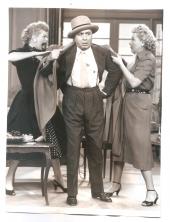Terrence Malick's `To the Wonder': More ravishing requiem than revelation
... And the Oscar for best actress in an Olympic twirling mode goes to -- Olga Kurylenko for "To the Wonder."
In that new film by director-writer Terrence Malick, the young Ukrainian beauty is having a blissful fling with vacationing American engineer Ben Affleck in Paris. Dreamy, erotic moments abound from the outset, on a train: What's she doing under that table between them? Use your imagination.
No need to imagine what's going on in subsequent romantic moments, as they frolic through photogenic Parisian streets, gardens and landmarks. Their best venue is Mont Saint-Michel, an island abbey off the Normandy coast, where the mossy antiquity of cathedral spires and surrounding tidal flats play host to them in one gorgeous shot after another. There, Ms. Kurylenko whispers in voice-over, "We climbed the stairs to the wonder."
Did we mention that she has a 10-year-old daughter? We did not. But she does, and Mr. Affleck takes them both home to America, to live with him in an ugly suburban over-development, Somewhere in the Southern Midwest.
(Mr. Malick tries to keep this place generic and nameless, but he can't fool me: It's godforsaken Bartlesville, Okla. -- I spent a year there one day, when my '69 Maverick broke down just outside the city limits.)
You'd expect a sexy cosmopolite like Ms. Kurylenko to feel lost there, and she does. She speaks no English and has no job. She does, however, have a true vocation: twirling. Not the kind done with a baton at halftime in a swimsuit, but the kind done in a free-floating dress wherever you're wildly in love and in tune with the universe. She spins just as nicely in Oklahoma as in Paris, and Mr. Affleck adores watching her do it -- for a while.
But when her visa runs out and she returns to France, he takes up with a lonesome blond cowgirl (Rachel McAdams) he knew in childhood.
It's an old, archetypal situation -- the indecisive guy, pursued by two contrasting women -- while his job takes him around Oklahoma, measuring soil and water samples in polluted communities near industrial sites.
If he (or the film) has any deep social or environmental concerns, they're hidden but mirrored in the character of a priest (Javier Bardem), who is in the midst of an agonizing crisis of faith: Mr. Affleck can't choose or commit to either of the women who adore him. The priest carries on with consoling the sick and dying, even though he no longer feels the presence of God in his work.
Mr. Malick's previous films number just six in 40 years. Like Orson Welles, his first two were heralded as masterpieces ("Badlands" in 1973, "Days of Heaven" in 1978), followed by a 20-year self-imposed layoff before "The Thin Red Line" (1998), for which he received both directing and screenplay Oscar nominations. His allegorical coming-of-age tale "The Tree of Life" (2011) -- like the film at hand -- was magnificently photographed by Emmanuel Lubezki in a kind of magical mobile trance. The camera swings from earth to sky, sensual to spiritual; the characters long to inhabit both realms.
It worked in "The Tree of Life." It doesn't here, because the human situation at its center is not so compelling. The overly artsy images lack their intended impact, leaving the ideas and emotions to be communicated through voice-overs and Hanan Townshend's good musical score (supplemented by Berlioz and Wagner).
Mr. Affleck plays more largo than "Argo" -- which is to say, he's so-o-o-o dull, coming alive only in one or two (too few) sex scenes with Ms. Kurylenko. Why their love has dissolved remains a mystery, since they never say more than a few words to each other. This is veritable silent film, its snippets of dialogue rarely synchronized to the visuals. One issue is marriage; the larger one, perhaps, seems to be the harsh, inevitable fact that the novelty of initial ecstasy wears off.
"We fight without knowing why," she says at one point -- and this hotheaded Euro chick is a good fighter. Why do their living quarters always look so barren? Because whenever they get any decent dinnerware or furniture, she runs around smashing it up. This starry-eyed Dorothy belongs in Cannes, not Kansas -- let alone Oklahoma.
Mr. Malick finds and films visual poetry everywhere, in Paris or prosaic prairie. In "The Tree of Life," his camera floated around, above and beneath his actors, with all sorts of cosmic digressions and continuity jumps, but he always returned to the central human situation. It was revelatory.
"To the Wonder," on the other hand, is a sort of solemn requiem, not a revelation. The camera never rests, hovering around its lovers like a hyper-caffeinated hummingbird, producing exquisite but frenetically disconnected images. It's ravishing. But it looks, and often feels, like one of those idyllic Caribbean cruise-line TV advertisements.
You know what happens sometimes on such cruises: As the sun slowly and beautifully sinks on the horizon, so does the boat.






